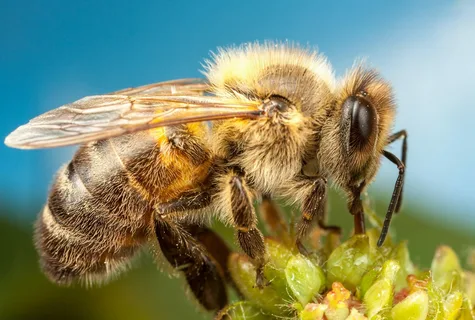Title: A World Without Bees: Unraveling the Consequences
What would happen if there were no bees in the world?
Introduction
Imagine a silent spring morning with no buzz in the air. A world where vibrant meadows sit unnaturally still, and the once-abundant fruits and vegetables become rare luxuries. This is not a dystopian novel—it’s a plausible future scenario if bees were to disappear from our world. With over 20,000 known species, bees are among the most crucial pollinators for wild plants and crops. Their extinction would trigger a domino effect impacting ecosystems, agriculture, economies, and human health. This article explores, in depth, what would happen if there were no bees in the world.
Chapter 1: The Role of Bees in the Natural World
Bees are key players in the pollination of flowering plants. They transfer pollen from male to female plant parts, allowing fertilization and the production of seeds and fruit. About 75% of the world’s flowering plants and 35% of global food crops depend to some extent on pollinators like bees. Their relationship with flora is ancient and deeply integrated into how life on Earth functions.
1.1 Pollination and Biodiversity Bees support biodiversity by helping plants reproduce. This reproduction process ensures genetic diversity, plant resilience, and habitat creation for countless other species—from insects to mammals.
1.2 Types of Bees and Their Contributions While honeybees often steal the spotlight, other bees like bumblebees, mason bees, and leafcutter bees are vital. Each type specializes in different plants and regions, contributing uniquely to their ecosystems.
Chapter 2: The Collapse of Food Systems
Without bees, many of the foods we take for granted would vanish. Almonds, apples, blueberries, cucumbers, and melons are just a few crops that heavily depend on bee pollination.
2.1 Decline in Crop Yields The immediate consequence would be a drop in yield for bee-pollinated crops. This decline would affect not just fruit and vegetable availability but also nuts, seeds, and oils.
2.2 Higher Food Prices As crop production drops, scarcity increases. The economic law of supply and demand dictates that food prices would skyrocket. Items like strawberries or avocados could become luxuries for the wealthy.
2.3 Impact on Livestock and Processed Foods The effect cascades further. Livestock feed crops such as alfalfa and clover rely on bee pollination. Reduced feed quality and availability would impact dairy and meat production, affecting everything from milk to burgers.
Chapter 3: Ripple Effects on Human Health
With fewer fruits, vegetables, and nuts available, our diets would shift toward more processed and shelf-stable foods. This change could worsen public health.
3.1 Nutritional Deficiencies Lack of access to bee-pollinated foods would lead to deficiencies in essential vitamins and minerals, increasing the risk of conditions like anemia, scurvy, and heart disease.
3.2 Medicinal Plants and Pharmaceuticals Many plants with medicinal properties rely on bees for pollination. Their extinction could restrict pharmaceutical development and traditional medicine access, especially in indigenous communities.
Chapter 4: Environmental and Ecological Collapse
4.1 Loss of Flora Many wild plant species would disappear without bees. These plants form the base of food webs, and their extinction would ripple through the ecosystem.
4.2 Animal Displacement and Extinction Herbivores would face food shortages, leading to population decline. Predators that rely on those herbivores would also be affected, leading to further ecological unraveling.
4.3 Soil Health and Water Cycles Plant loss affects soil retention and water cycles. Erosion increases, and the land becomes less arable. Local climates can also shift as green cover diminishes.
Chapter 5: Economic Impacts
5.1 Agriculture and Employment Globally, pollination services are valued at over $200 billion annually. Loss of bees would decimate agriculture-dependent economies and lead to massive job losses.
5.2 Trade and Global Markets Countries that rely on agricultural exports would face trade deficits. The global food market would become unstable, with price volatility affecting geopolitical stability.
5.3 Innovation and Artificial Pollination Technology might attempt to fill the gap, but artificial pollination is costly and inefficient. It’s not scalable to the level required for global agriculture.
Chapter 6: Psychological and Cultural Impacts
6.1 Cultural Traditions and Cuisine Many traditional dishes and cultural practices involve ingredients dependent on bee pollination. From Indian mangoes to Mexican avocados, culinary heritage would suffer.
6.2 Mental Health and Environmental Grief The disappearance of bees could contribute to ecological anxiety and a sense of loss among people closely connected to the land.
Chapter 7: The Fight for Pollinator Survival
7.1 Causes of Bee Decline Pesticides, habitat loss, climate change, and disease have all contributed to the current decline in bee populations. Industrial agriculture and monocultures have worsened the situation.
7.2 Conservation Strategies Solutions include banning harmful pesticides, planting pollinator-friendly flowers, preserving wild habitats, and supporting organic farming.
7.3 Community and Policy Initiatives Grassroots campaigns and legislative measures can make a difference. Examples include urban beekeeping, “bee highways,” and subsidies for pollinator-friendly farms.
Chapter 8: What We Can Do
8.1 Educate and Advocate Raise awareness about the importance of bees. Support policies that promote pollinator health.
8.2 Support Sustainable Brands Choose products that use pollinator-friendly methods. Look for organic or Bee Better Certified labels.
8.3 Become a Pollinator Guardian Plant a garden, avoid pesticides, and support local beekeepers.
Conclusion
A world without bees would be unrecognizable—less colorful, less bountiful, and far less stable. Their disappearance would affect nearly every aspect of life as we know it. While technology might offer partial solutions, there is no real substitute for the natural pollination that bees provide. Their survival is tied to ours, and the time to act is now.

